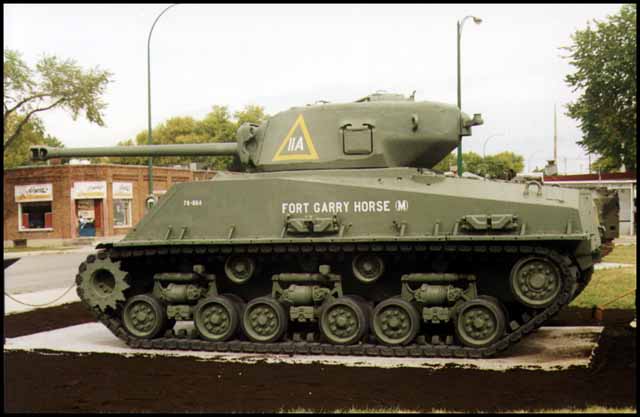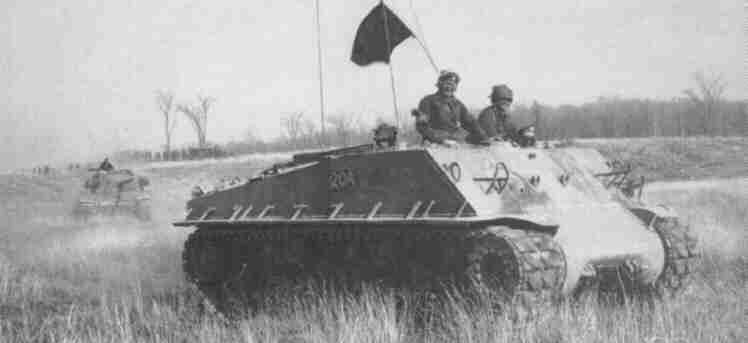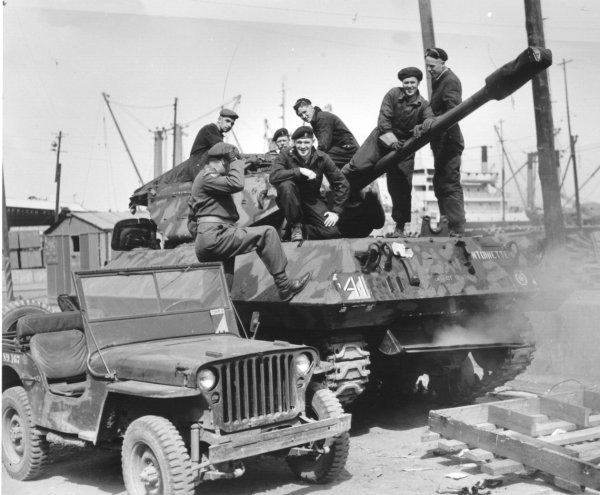| Geoff Winnington-Ball of Maple
Leaf Up found some some background information on the M10 17 pdr
SP Gun in Korea:
"I went digging a bit and
came up with an interesting little book which has just been released and
is presently sitting on the shelves, here in Canada at least. Entitled
BLOOD
ON THE HILLS*),
by David Bercuson, this book seems to be a comprehensive reference in which
the author is brutally honest about both the triumphs and the shortcomings
of the whole process of seeing some 25,000 Canadians off to war for the
second time in a scant five years. While his prime thread is the history
of that [Canadian] excursion, with its attendant and damning political
overtones, his emphasis is on the vets themselves, many of whose accounts
are contained herein. It's the first definitive thing I personally have
ever read on the subject, and I was impressed.
This book seems to be a comprehensive
reference in which the author is brutally honest about both the triumphs
and the shortcomings of the whole process of seeing some 25,000 Canadians
off to war for the second time in a scant five years. While his prime thread
is the history of that [Canadian] excursion, with its attendant and damning
political overtones, his emphasis is on the vets themselves, many of whose
accounts are contained herein. It's the first definitive thing I personally
have ever read on the subject, and I was impressed, but I'd like to hear
the opinions of others better schooled in that era.
On the subject of tanks and
equipment in general, Bercuson is pretty straight-forward, but he fails
to answer some of our questions here. It was Foulkes himself who established
the very hodge-podge mix of Canadian, British and American weapons and
equipment for the boys, but not until February 1951. By that time, our
Special Force brigade was training in Ft. Lewis, Washington, and mention
is made of Rockingham's changing the mission of the armour from anti-tank
to armour-infantry co-operation:
...by December the
NKPA and its T-34s were history, and the Chinese never used armour in Korea...
Bercuson goes on the delineate
the weakness on the M-10:
...it was dangerous;
its open turret invited any enemy soldier with even a mediocre arm to lob
in a hand grenade. Rockingham was uneasy about using the M-10s. He soon
shifted the armour squadron from anti-tank training to armour-infantry
co-operation. But that too was useless, because the Korean terrain would
not allow infantry and armour to advance together, while using armour in
the attack forced an army to stay road-bound.
Bercuson's only specific
reference to the replacement of the M-10s comes a bit later in the story,
once the 25th Canadian Infantry Brigade Group had landed at Pusan on 4
May, 1951:
The serious work began
on 5 May in a tropical downpour. Rockingham arranged for the replacement
of most of the brigade's 17-pounder anti-tank guns with U.S.-built 75mm
recoilless rifles, which had proved effective at providing with close,
direct-fire support... several days later, Ottawa authorized Rocky to arrange
to swap the M-10 tank destroyers of C Squadron, Lord Strathcona's Horse,
for Sherman M4A3 tanks, supplied by the U.S. Army.... these two major changes
of equipment were not complete until mid-May, delating the training schedule...
So it looks as if the M-10s
went directly to the U.S. Army, to be reallocated/disposed of according
to their whim.
*)
see
Michael Dorosh' CANUCK
website for a discussion on the book BLOOD
ON THE HILLS: THE CANADIAN ARMY IN THE KOREAN WAR by Dr. David J. Bercuson. |



